The Top 8 Language Resources I Actually Use on a Regular Basis
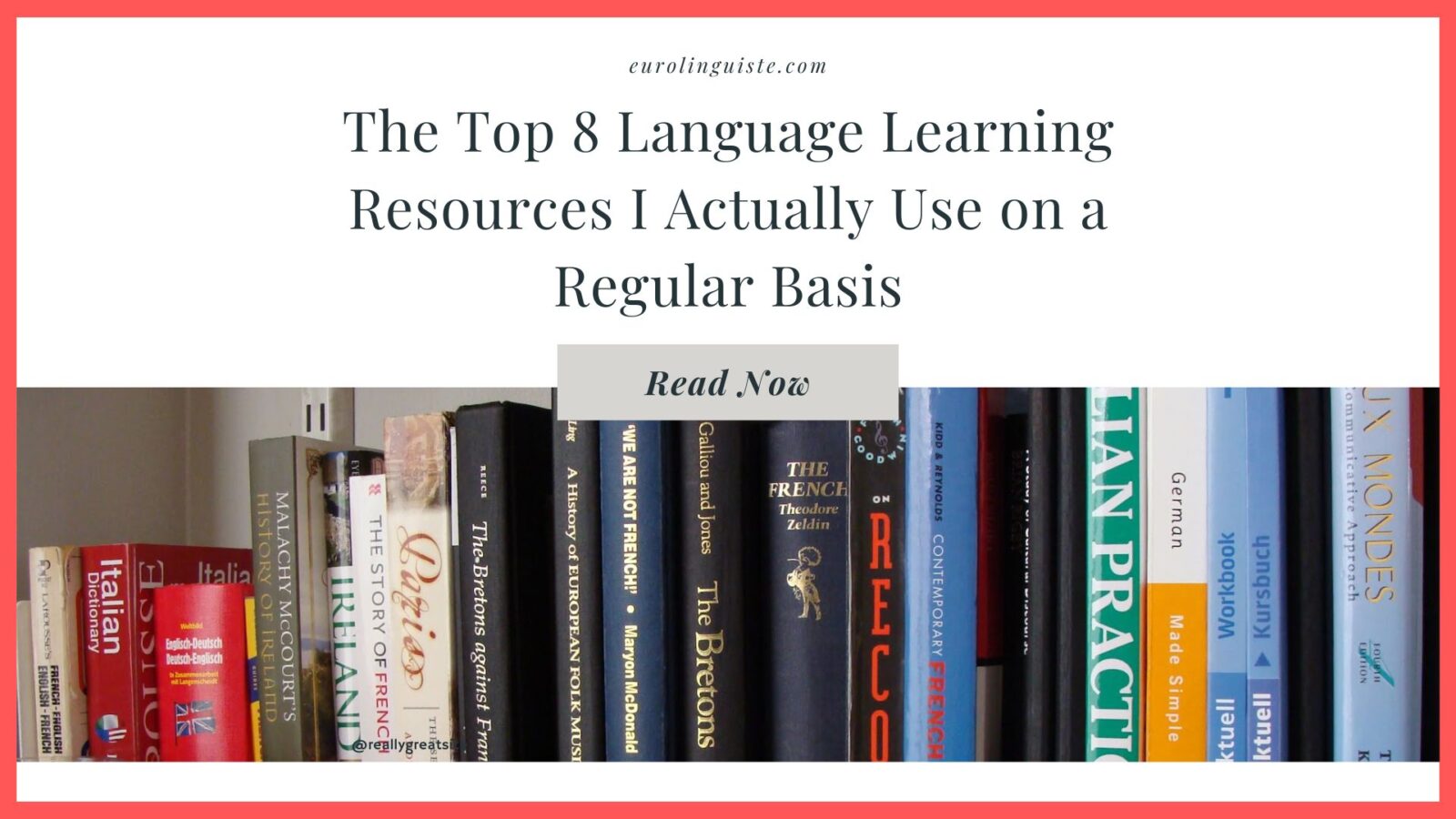
My name is Shannon Kennedy and I'm the language lover,…
I review a lot of different language learning materials for Eurolinguiste. I love getting the chance to try out new resources, and I even go on to continue using some of the materials I review, but not all of them. There are just too many options and I believe it’s important not to spread yourself too thin.
Before we get too far, this post contains affiliate links. This means that if you make a purchase through one of these links, I’ll receive a small commission at no extra cost to you. If you enjoy Eurolinguiste, please consider purchasing from my affiliate links to help support what I do.
In all honesty, I’d love to be able to use more of the resources I’ve discovered consistently, but there really isn’t enough time for me to get to all of them. Not regularly, at least.
And this isn’t anything to do with the quality of the resources I’ve decided not to use. Some of them are incredible, but they just aren’t what I, personally, need to use at whichever stage I’m at with my language study.
So, rather than spend a little bit of low-quality time with a large amount of resources, I’ve had to narrow the field. Instead, I’ve selected a few with which I like to spend a lot of high-quality time studying. This, of course, changes on occasion, but I’ve been pretty consistent with my choices over the past few years.
Only then, once I’ve exhausted these resources, do I begin to tap into alternatives and additional resources.
In this post, I’m sharing the eight language learning resources I use the most on a consistent basis. I’ve included how often I use them, what I use them for, and how much they cost.
Not all of these resources will work for everyone, but they are what works for me. With these resources, I feel as though my study is equally balanced between the five skills I find necessary to being competent in a language – listening, speaking, reading, writing, and building vocabulary.
Top 8 Language Learning Resources I Use As Someone Who’s Learned 16+ Languages
1. LingQ
I use LingQ EVERY DAY. It is probably the only resource I use every single day (although I have good intentions for other resources). The lessons are whatever length of time I choose and I can always find the time to fit in a bit of study on LingQ.
The import feature on the app is incredibly robust and I can add a wealth of personalized content to the app.
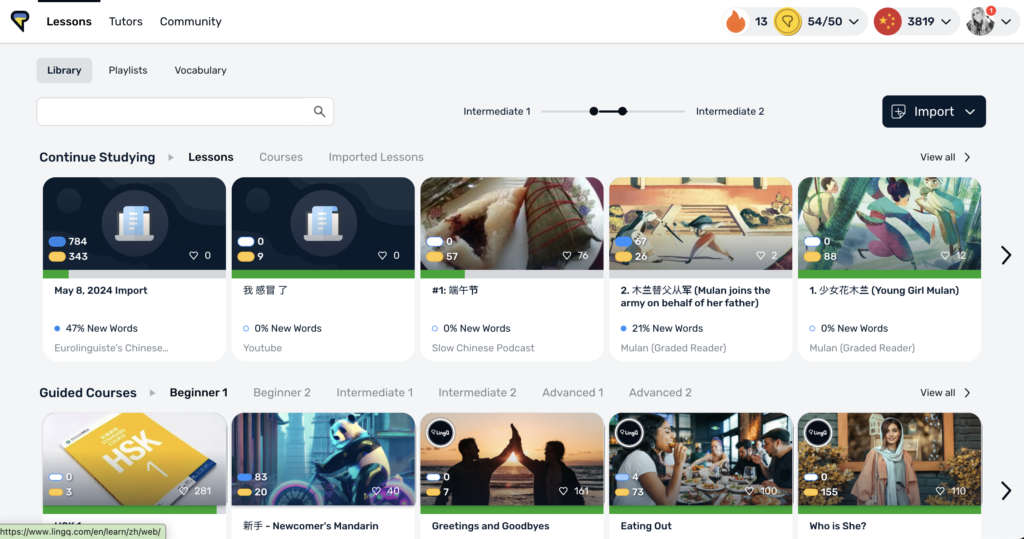
Why I use this resource // I use this resource to memorize vocabulary, read books I love, study subtitles for my favorite shows, and get a bit of extra support with language learning content on YouTube. It uses spaced repetition to help you retain the words and phrases when you use the flashcard feature. There are a ton of great courses already set up on LingQ, but if they don’t have what you’re looking for, you can create your own. I use several pre-made courses when I’m starting out, but I also create my own sets from vocabulary I keep in my notebook as well as the content I import.
How often I use this resource // Almost every day.
The cost of this resource // $14.99/month. There are, however, discounts if you subscribe annually or biannually.
Try this resource for yourself. (affiliate link)
Or, read my review of LingQ.
2. italki
Between all of the languages I am studying, I take several italki lessons per week. Way back when, I was hesitant to start using it, in all honesty, but the name kept coming up amongst language bloggers so I finally gave in. I haven’t looked back since.

Why I use this resource // I like to work with the teachers on italki because I get instant feedback on my progress and because teachers are perfect for helping you get pointed in the right direction.
How often I use this resource // I use it at least once a week.
The cost of this resource // $5+ per hour (or Free if you only visit for language exchanges).
Try this resource for yourself. (affiliate link)
Or read my review of italki.
3. Assimil
I use Assimil several times per week. There are currently only 100 lessons per language so I am going to be pretty sad when I run out of lessons. They’ve started publishing materials beyond their With Ease series (I also love their phrasebooks), so I’m eager to see what they’ll come up with for the languages I’m learning. Assimil is one of the first resources I buy when I start learning a new language and I highly recommend it.
Assimil is a French publication so it’s worth noting here that their widest selection of languages are taught from French. While they do have course books for English speakers, the selection is a little more limited. That said, it makes for a great way to ladder your languages.
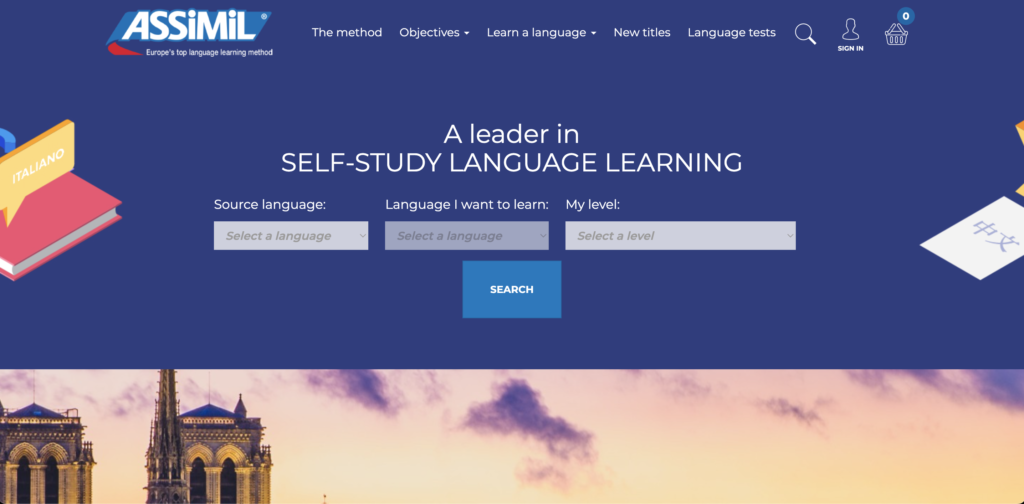
Why I use this resource // I use Assimil because they are one of the few resources that helps you to develop all four aspects of your language learning – reading, writing, listening, and even speaking. They also offer various exercises and notes to help you fully delve into the language that you’re learning.
How often I use this resource // I use it several times a week.
The cost of this resource // $50-80.
Try this resource for yourself. (affiliate link)
4. Pimsleur
I listen to Pimsleur several times a week while driving to and from work. I sometimes mix it up with foreign language music and/or podcasts. I’ve used Pimsleur for more than six languages now and it’s a really good way to make use of the time I spend in the car. It’s expensive, but I have found it to be a good use of my language learning money.
That said, they now have an app that makes their courses much more affordable as well as makes more of its languages accessible.
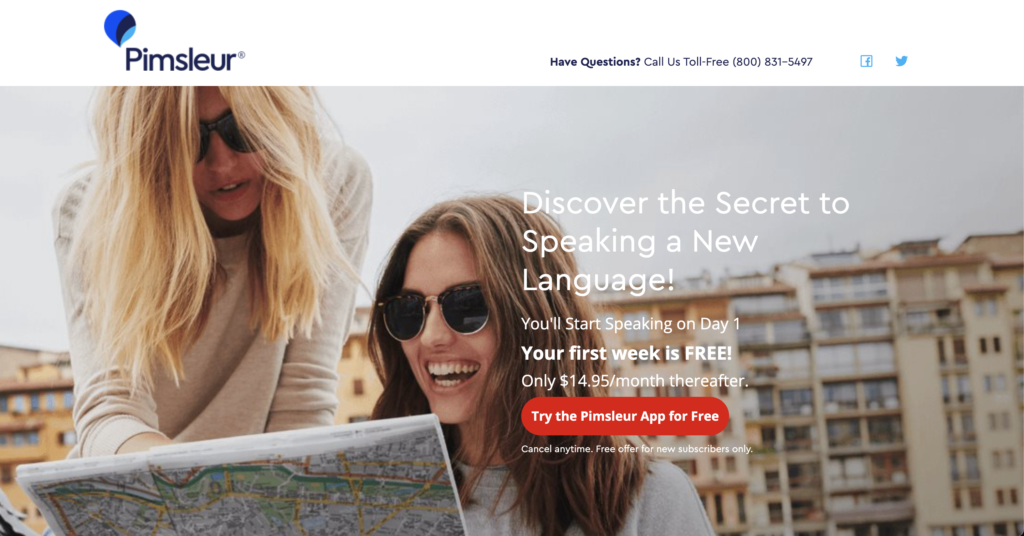
Why I use this resource // I use Pimsleur to work on my listening and speaking skills and because it’s a great use of all the time I spend commuting.
How often I use this resource // I use it at least once a week.
The cost of this resource // $120-$550 if you buy the courses in their traditional format. It’s $14.95/month if you use the app.
Try this resource for yourself. (affiliate link)
5. Journaly
This is a fairly new-to-me resource and my goal is to use Journaly at least once per week. I’ve found its comparable predecessor, Journaly, really useful for learning to write and/or improving my writing.
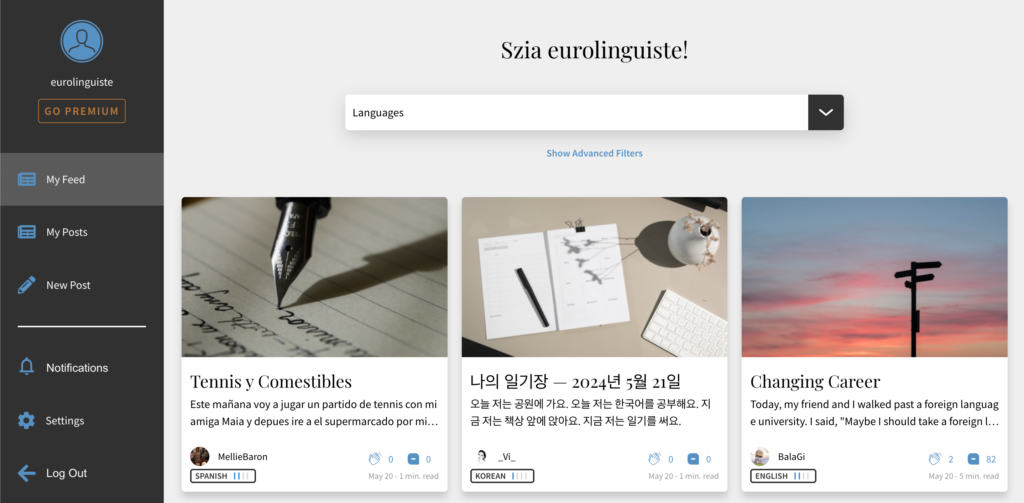
Why I use this resource // I use this to write short posts relevant to things that I might actually write or talk about in a real-life conversation or article. The community on the platform offers feedback and corrections which is quite helpful.
How often I use this resource // I try to use it at least once a month.
The cost of this resource // Free.
Try this resource for yourself. (affiliate link)
6. FluentU
I love that FluentU uses native language content to help you improve your ability in and understanding of a language. They have a wide variety of videos available in several languages and I can always find something that interests me to work through. I really enjoy the music video and mini-movie series they have available.
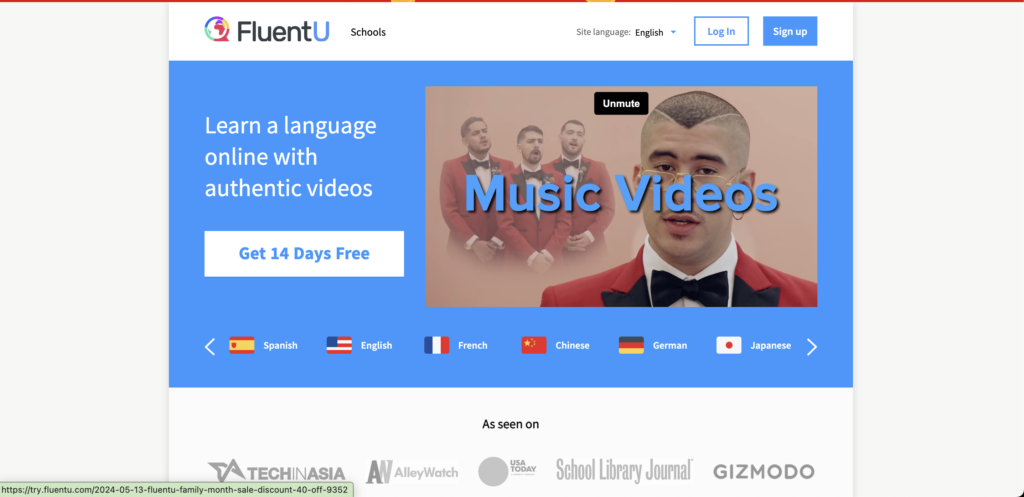
Why I use this resource // I use FluentU to work on comprehension and to learn phrases that are used in everyday conversations in my target languages.
How often I use this resource // I use it at least once a week.
The cost of this resource // Free-$18/month.
Try this resource for yourself. (affiliate link)
7. Practice Tests
I used the HSK practice tests to study Mandarin when I was preparing for the exam. I found using practice tests to gauge where I’m at with my learning extremely practical. Practice tests – whether you plan on sitting the CEFL or the HSK exams – are a wonderful way to find out what level you’re at with the language you’re learning and give you a good idea of what you need to work on.
Why I use this resource // I use this resource to both practice for tests I plan on taking and to gauge what level I’m at with my learning.
How often I use this resource // I use it at least once a week.
The cost of this resource // $10-25.
Try this resource for yourself.
8. Native Language Films, Books, and Music
I don’t advocate using films, books, and music as standalone learning tools until you’re at a more intermediate or advanced level, but they can serve as a quick way to create the impression of language immersion when a real-life immersion environment isn’t available to you. They’re also a great way to grow attached to the culture tied to the language you’re learning which in turn deepens your relationship and interest in the language itself. I listen to music in my target language almost every day and I watch films or television shows every week or so. But the one thing I do quite a bit, as mentioned above, is read daily.
Why I use this resource // I use native-language films and music to create a temporary immersion environment. They are also great for picking up useful words and phrases.
How often I use this resource // I use it at least once a week.
The cost of this resource // Free-$3.99 (if you rent films on Amazon).
Try this resource for yourself.
I do, on occasion, use a few other resources to supplement my language study, but these are the eight that I use consistently.
If you enjoyed this list, I’m happy to announce that I’ve launched my Language Learning Gear page so that you can check out the various language learning resources I use and try them out for yourself!
I’d also love to hear about the language learning resources you use on a regular basis so please let me know what they are in the comments!
My name is Shannon Kennedy and I'm the language lover, traveler, and foodie behind Eurolinguiste. I'm also the Head Coach of the Fluent in 3 Months Bootcamp, co-founder of Women in Language, and former Resident Polyglot at Drops.



